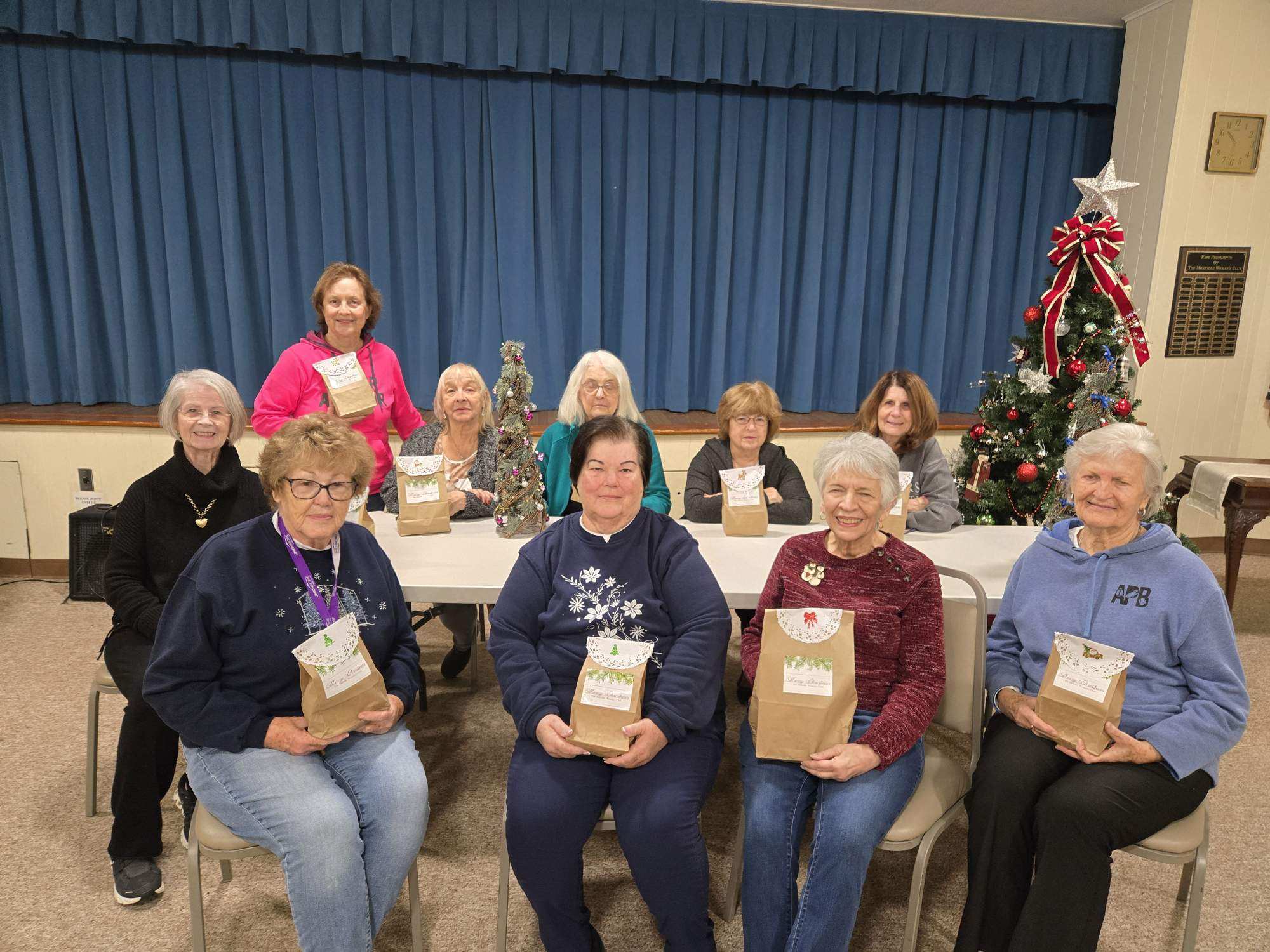Sitting Pretty
Backyard birdwatching in winter is a perfect pastime; housebound may find a new hobby.
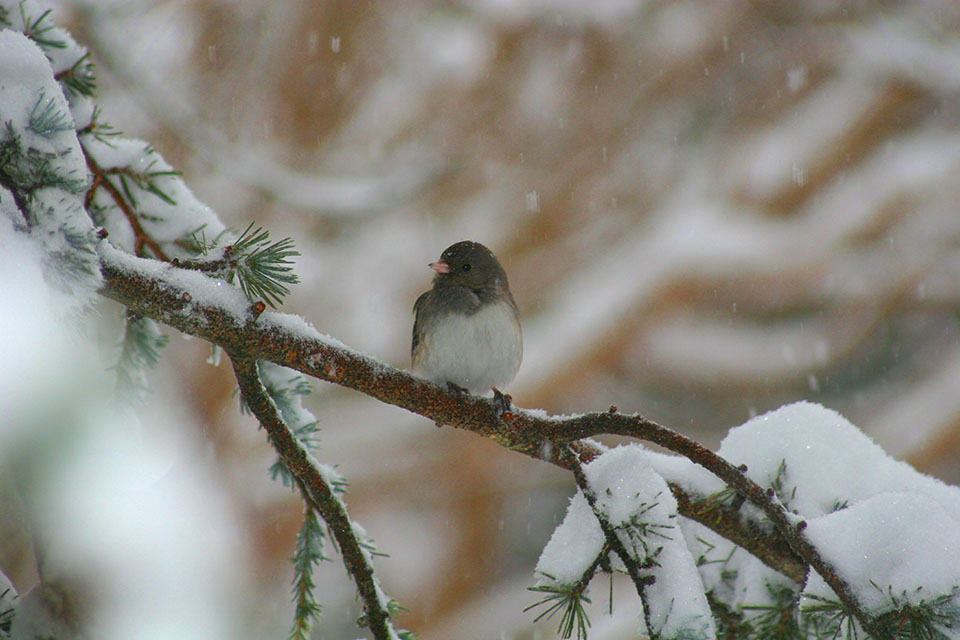
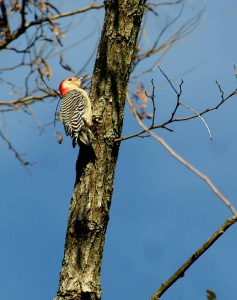
Early on a quiet and brisk Saturday morning, with your coffee cup in hand, you glance out of your window and your eyes are almost immediately drawn to a flash of bright crimson disappearing into the hedgerow. On the ground beneath a leafless dogwood you make out a flock of several small birds scratching in the leaf litter. You easily recognize their slate gray backs and those diagnostic white tail feathers flickering, and several tawny brown sparrows moving in amongst them. Your eye moves on to the trunk of the oak and you discern a blue-ish gray and white bird intently investigating the crevices in the tree’s bark. This simple pleasure is enjoyed by millions of people who appreciate and marvel at the wildlife just outside their windows on these cold and frosty winter days.
Many of us are fortunate to have the opportunity to attract wildlife like cardinals, white-throated sparrows, juncos, nuthatches, and perhaps even a woodpecker or two to our garden landscapes. According to a census study presented by the U.S. Fish and Wildlife Service, more than 65 million Americans are engaged in feeding wild birds. This extremely gratifying activity brings people in contact with our native wildlife. While many of us feel like we are helping these remarkable creatures, they are in reality supremely adapted to survive our harsh winters. Though it is one of our country’s most popular pastimes, there are several important concerns we should take into account when inviting wild birds into our backyards.
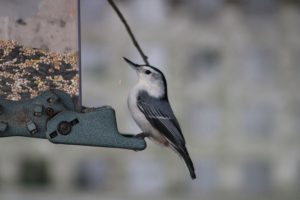
The need for us to make our landscapes more wildlife-friendly cannot be overstated. Many of our traditionally common species are in decline due mostly to the loss of habitat through development or the unchecked expansion of invasive non-native species. To attract a more diverse avian clientele, you might consider replacing some non-native trees and shrubs in your landscape with native counterparts. Most of our songbirds rely on invertebrates, which feed on native vegetation, in order to nourish their young. While many of our year-round resident songbirds do survive and thrive on seeds, their young require insect protein to develop.
It is critical to also provide water for birds in your winter landscape, so a fountain with a small circulating pump and a low voltage heater will keep the water from freezing and attract birds to the sound of the moving water. When locating feeding stations in your yard, please provide cover to protect the birds from the neighborhood cats and to give them a chance to survive the visit from your local Cooper’s or sharp-shinned hawks. It is also suggested that locations for your feeding stations could be moved around throughout the winter in order to avoid the spread of avian diseases.
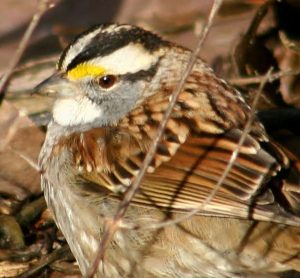
Some of our favorite garden birds also appreciate a brush pile where they may retreat to safety or as a roost for the night out of the cold. Resist the urge to overly tidy up your winter landscape. Research indicates the value of leaving standing stems and some leaves on the ground in helping birds make it through the colder months. Finally, remember that birds feed in a variety of different ways so it is important to have different feeders to accommodate them. Let’s take a moment to familiarize ourselves with several of our more familiar backyard birds!
A fairly large brilliant red songbird often seen in pairs or small family groups with a thick reddish bill is easily recognizable as a northern cardinal. The female cardinal lacks the male’s bright coloration but her greenish-brown plumage is quite lovely in its own right. The cardinal’s thick bill places it in a loose grouping of birds referred to as grosbeaks and it is quite adept at cracking open seeds. Cardinals appreciate a platform feeder and often feed on or close to the ground.
Also found feeding on the ground are dark-eyed juncos and white-throated sparrows. Both of these species leave our region in mid-spring for breeding grounds in the Appalachian Mountains or in the North Country. Come colder weather however, these sparrows flood back to their wintering grounds and are often found in flocks in the woods or at our feeders. Juncos are easily recognizable by their gray backs, white bellies and flashing white tail feathers. The white-throated sparrow will often sing on a sunny mild winter day their famous “Oh Canada, Canada…” song.
Both sparrows and juncos forage on the ground among the leaf litter for invertebrates and seeds scattered around. Be sure to listen for scratching in the bushes or shrubs and most likely you’ll come across either or both of these two common species.
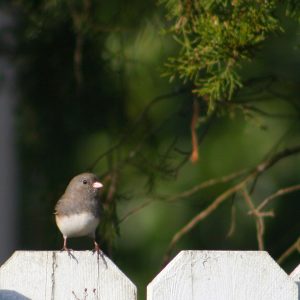
Up from the ground and along the trunks of the trees in our garden we may encounter nuthatches and woodpeckers. There are two species of nuthatches that can be regularly identified in our region—the white- and red-breasted nuthatches. Both species are seed eaters though their method of feeding is often quite different. White-breasted nuthatches, when not snatching a seed from the feeder, will forage along tree trunks, poking their needlelike bills into crevices and cracks to find invertebrates to eat. Red-breasted nuthatches often visit us during migration periods and their insistent nasal call may be heard high up in the trees as they feed on cones and sweetgum balls.
Several woodpeckers are often regular visitors to our yards and the two most common are downy and red-bellied woodpeckers. Both of these woodpeckers are quite vocal and their calls are recognizable. The downy’s is a distinctive downward whinny whereas the red-bellied woodpecker’s call is a shrill “churr” and can be quite harsh and loud. Like all woodpeckers you might spot them tapping on a tree limb but both will visit your feeders. Like the cardinals and the nuthatches, these birds appreciate black oil sunflower seeds and will also use suet feeders.
Many of our resident birds will frequent your backyard when you invite them in. There are myriad resources available to assist the novice wildlife gardener in planning a wildlife-friendly yard. Be sure to check in with “CU Maurice River” for programs and information to point you in the right direction, or even consider having us designate your yard as “Wildlife Friendly”!

